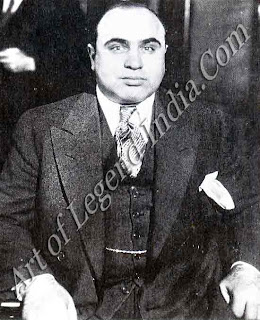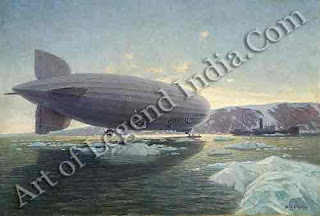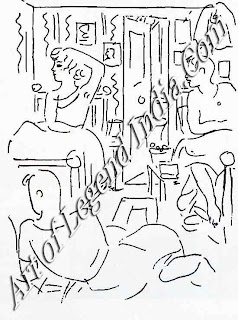A Year in the Life 1929
Hopper
had already forged his distinctive style so evocative of urban desolation when
the Wall Street Crash of 1929 shattered the American Boom and international
hopes for peace and prosperity. A world depression and the 'Hungry Thirties'
were just around the corner.
For
most of 1929, the Western world was not only prosperous but peaceful. One
government after another committed its people to the 1928 Kellogg-Briand Pact
which renounced war as an instrument of policy. The USSR and USA, though
non-members of the League of Nations, adhered to the Pact, which eventually had
65 signatories. In 1929, the Young Plan tackled the remaining cause of
ill-feeling between Germany and the wartime Allies by slashing the burden of
reparations, and Allied troops began evacuating the Rhineland, which had been
occupied since the end of the War. The French statesman Aristide Briand put
forward proposals for a federated Europe.

A spate
of books appeared which were more or less openly anti-war, concentrating on its
horrors rather than questions of national 'war guilt'. Three famous examples,
published in 1929, were Robert Graves's autobiography Goodbye To All That,
Ernest Hemingway's A Farewell to Arms, and the German writer Erich Maria
Remarque's international best-seller later a famous film All Quiet on the
Western Front.
THE WALL STREET CRASH
The
economic situation in the West was somewhat shaken except in the United States,
where real wages and national wealth had doubled since the War. Prices of
shares soared on the Wall Street Stock Exchange, till it seemed that, if you
bought, you were certain to make money. Speculative mania raised the Dow Jones
index to 300 by the end of 1928, and the trend continued through 1929. The
index peaked at 381 in

August
1929; then, in September, confidence faltered and on 'Black Thursday', 24
October, the Crash came, with wave after wave of panic selling. By November,
Dow Jones was down to 197 and thousands of speculators had been ruined.
Frightened people rushed to secure their remaining capital, causing a
disastrous run on the banks followed by closures that created new panics. In a
downward spiral, industries were disrupted and millions became unemployed. The
Great Depression lasted for years and, since the USA was a great creditor nation
(and was soon to start calling in its loans), it spread all over the
industrialized world. Apart from shattering the European economies, the
Depression wrecked the Young Plan, destroyed many people's faith in democracy,
and made possible the rise of Hitler and other dictators.
This
year also marked the beginning of a new era for Soviet Russia, where Joseph
Stalin had emerged as the leading figure. Stalin's principal rival, Trotsky,
went into exile, and his theory of fomenting world-wide 'permanent revolution'
was abandoned in favour of Stalin's policy of building 'socialism in one
country'. At the same time Stalin defeated the 'Right Opposition', which
opposed as premature the policy of collectivizing agriculture. The Rightist
leader, Bukharin, and his closest associates were expelled from the Politburo.
 Other
events of 1929 included Alexander, King of the Serbs, Croats and Slovenes,
declaring himself dictator, and re-naming his kingdom Yugoslavia. As a result
of the Lateran Treaties between the Papacy and Mussolini's Italy, the Pope
ceased to be the 'prisoner of the Vatican' (self-immured since the new Italian
state seized the city of Rome in 1870). The Vatican was recognized as an
independent city-state and Catholicism became in effect the state religion.
Other
events of 1929 included Alexander, King of the Serbs, Croats and Slovenes,
declaring himself dictator, and re-naming his kingdom Yugoslavia. As a result
of the Lateran Treaties between the Papacy and Mussolini's Italy, the Pope
ceased to be the 'prisoner of the Vatican' (self-immured since the new Italian
state seized the city of Rome in 1870). The Vatican was recognized as an
independent city-state and Catholicism became in effect the state religion.

In
1929, the 'Talkies' were all the rage, and cinemas everywhere were being
re-wired for sound. Sunbathing had become popular, and the first precautionary
aids sun-tan lotion and Mexican straw hats appeared. The German Graf Zeppelin
airship flew around the world while Richard Byrd, the American pioneer aviator,
flew over the South Pole. The Museum of Modern Art in New York was opened. The
ballet impresario Serge Diaghilev died, as did the two giants of First World
War France, Marshal Foch and George Clemenceau. More ominously, so did the
architect of Franco-German reconciliation, Gustav Stresemann.
Writer
– Marshall Cavendish
 Other
events of 1929 included Alexander, King of the Serbs, Croats and Slovenes,
declaring himself dictator, and re-naming his kingdom Yugoslavia. As a result
of the Lateran Treaties between the Papacy and Mussolini's Italy, the Pope
ceased to be the 'prisoner of the Vatican' (self-immured since the new Italian
state seized the city of Rome in 1870). The Vatican was recognized as an
independent city-state and Catholicism became in effect the state religion.
Other
events of 1929 included Alexander, King of the Serbs, Croats and Slovenes,
declaring himself dictator, and re-naming his kingdom Yugoslavia. As a result
of the Lateran Treaties between the Papacy and Mussolini's Italy, the Pope
ceased to be the 'prisoner of the Vatican' (self-immured since the new Italian
state seized the city of Rome in 1870). The Vatican was recognized as an
independent city-state and Catholicism became in effect the state religion. 














0 Response to "American Great Artist Edward Hopper - A Year in the Life 1929 "
Post a Comment